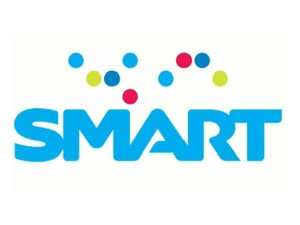
Smart Communications, a unit of Philippine Long Distance Telephone Co., will deploy the Antenna-Integrated Radio (AIR) solution built by Ericsson, the first such installation in Southeast Asia.
MANILA, Philippines—Smart Communications, a unit of Philippine Long Distance Telephone Co., will deploy the Antenna-Integrated Radio (AIR) solution built by Ericsson, the first such installation in Southeast Asia.
The move would improve Smart subscribers’ coverage quality and allow them access to more advanced wireless technologies.
“We expect a vast improvement in coverage and swiftness of installation times to greatly benefit our subscribers, especially as we see increasing usage of mobile Internet in our network,” Rolando G. Peña, head of technology at Smart and PLDT, said in a statement.
To date, Ericsson has commercially deployed the AIR solution for both GSM and LTE networks of Smart. Tests show an improvement of as much as 73 percent in 3G coverage when using AIR. Ericsson’s AIR has fewer units and fewer interconnections compared with traditional site solutions, allowing a new standard or a new frequency band to be introduced easily.
PLDT earlier reported how mobile Internet usage continues to grow strongly among mobile subscribers of its wireless brands Smart and Sun Cellular. PLDT’s mobile Internet revenue increased by 49 percent as of end-June 2013, compared with that of a year ago.
PLDT operates the country’s most extensive network with over 9,835 cell sites, 15,116 cellular/mobile broadband base stations, and 2,898 fixed wireless broadband-enabled base stations, supported by over 71,000 kilometers of fiber optic cabling, serving over 73.4 million subscribers.
“Network solutions like AIR allow our already supercharged infrastructure to become even more future-proof, and able to serve the demands of present and more advanced technologies, such as LTE-Advanced,” Peña said.
Smart, already the country’s leader in current LTE with over 1,000 sites in almost 180 cities and municipalities successfully tested LTE-Advanced.
Deployed by operators in South Korea, the United Kingdom, and some South American firms, LTE-A is a next-generation mobile broadband technology that can deliver data rates in excess of 200 megabits per second (mbps) up to a possible 700mbps, in trials in Metro Manila and Davao City.
“When comparing 3G AIR with traditional 3G radio base stations, there is a marked improvement in coverage when using AIR. In addition, AIR simplifies and reduces installation lead times,” said Elie Hanna, president and country manager for Ericsson Philippines and Pacific Islands.


